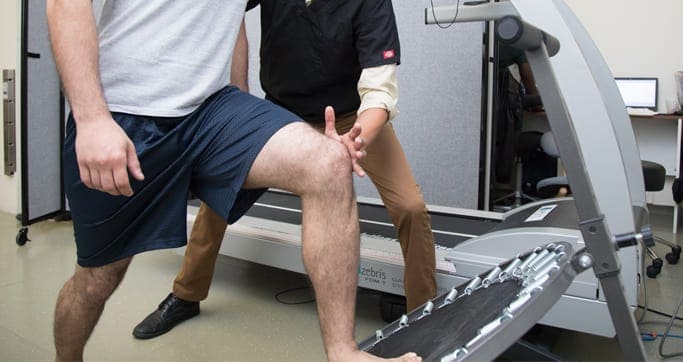August 14, 2023

Trauma to the ACL (anterior cruciate ligament) is a common sports tear that can be debilitating and in some cases career-ending for people in professional sports.
ACL is a key knee connective knot that joins the thigh bone to the shinbone. Risk for ACL injury is increased for some sports than for others. ACL ruptures are most frequent in kinds of sports like football, basketball, soccer, ice hockey.
It is increasingly common for docto prevent long run effects such as osteoarthritis and menisci tears. However, there is mounting evidence that conservative handling of ACL injuries, including physical therapy, are just as effective in resolving this type of trauma. Furthermore, conservative treatment for ACL injury is reversible, while the surgery is permanent.
There are a plethora of experimental studies and reviews that address the topic of surgery vs ACL PT post-injury. The most impressive studies are described below as follows.
There was no significant difference between the two groups. In 61% of the rehab group, surgical reconstruction was avoided without compromising results. The research team of people that went for early post-trauma reconstruction did not lead to better results.
The follow-up study by the same authors came back to developing side effects. Five years after treatment, half of the early rehab group did not need the surgery at all.
Regardless of whether ACL patients elect to play after ACL rupture.
If you have suffered an ACL injury, NYDNRehab in NYC offers some the most technologically advanced diagnosis and treatment strategies in the USA. Before agreeing today, and see why we are the very best rehabilitation specialists in NYC.
Frobell, RB et al. A randomized controlled trial for acute ACL tears. N Eng J Med. 2010;363(4): 331-342.
Frobell, RB et al. Treatment for acute anterior cruciate ligament tear: five year outcome of randomised trial. BMJ. 2013; 346:1-12.
Dr. Lev Kalika is a world-recognized expert in musculoskeletal medicine. with 20+ years of clinical experience in diagnostic musculoskeletal ultrasonography, rehabilitative sports medicine and conservative orthopedics. In addition to operating his clinical practice in Manhattan, he regularly publishes peer-reviewed research on ultrasound-guided therapies and procedures. He serves as a peer reviewer for Springer Nature.
Dr. Kalika is an esteemed member of multiple professional organizations, including: